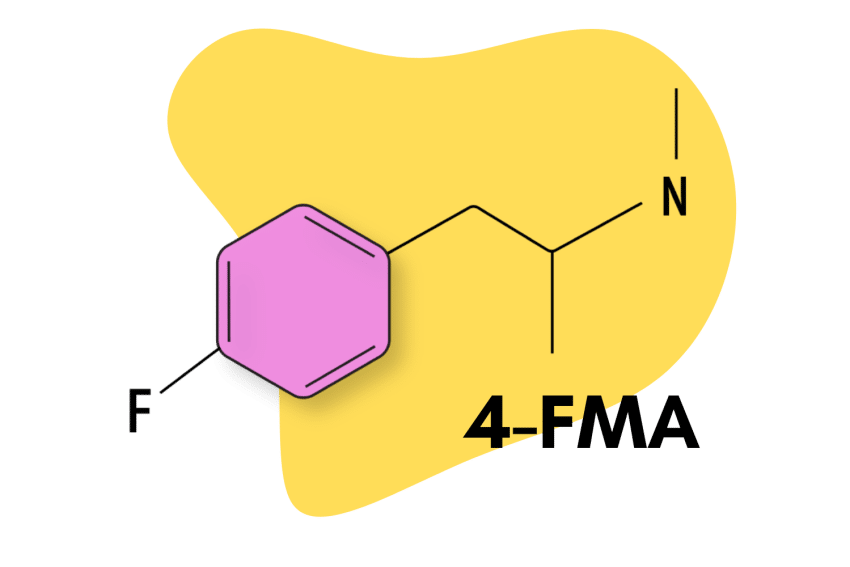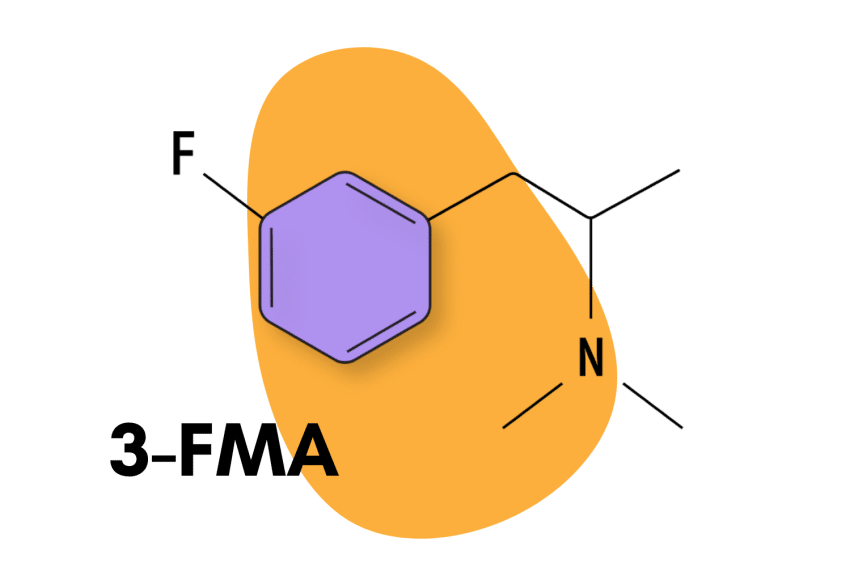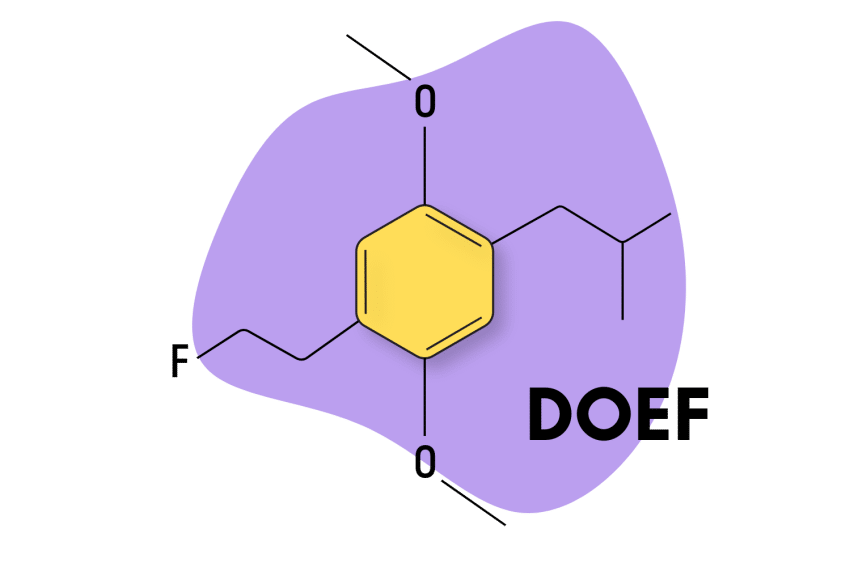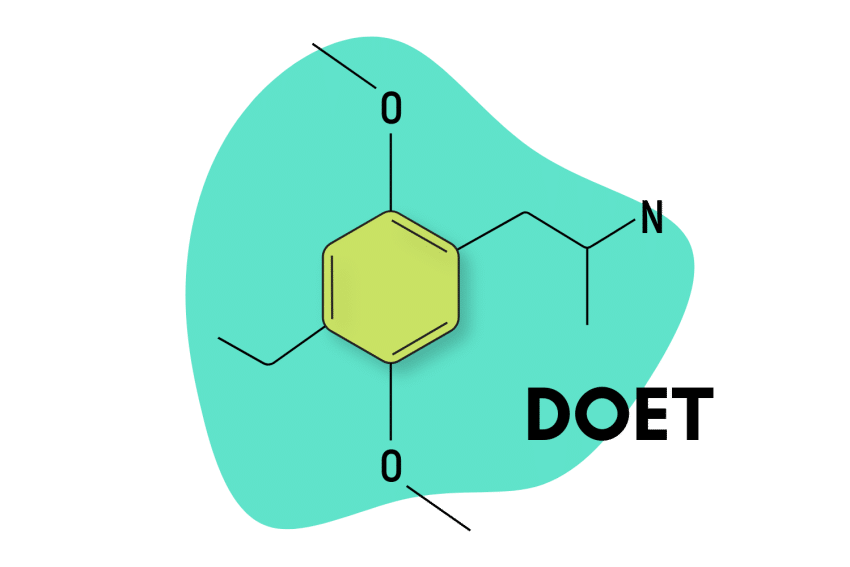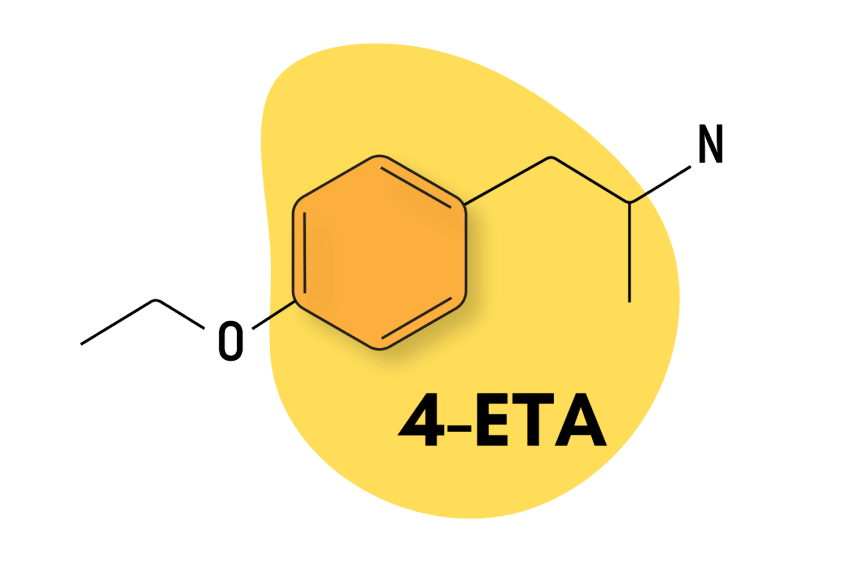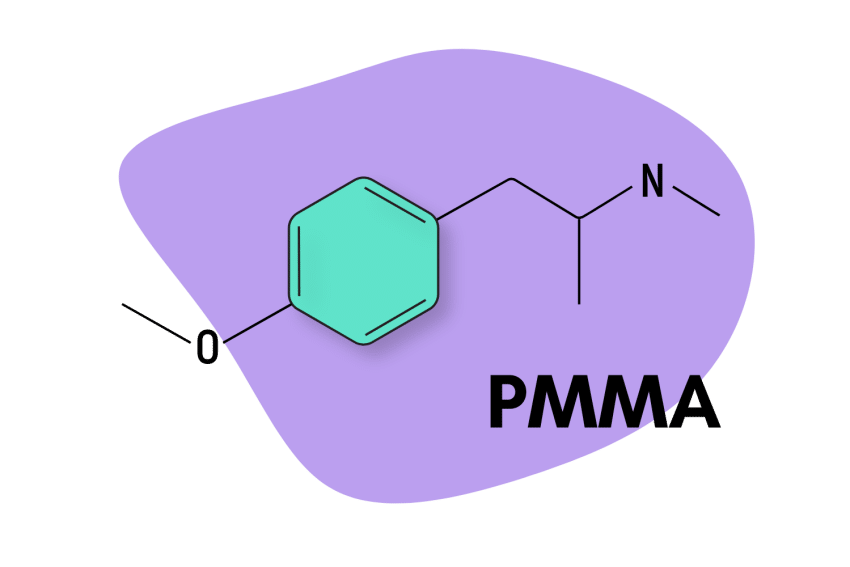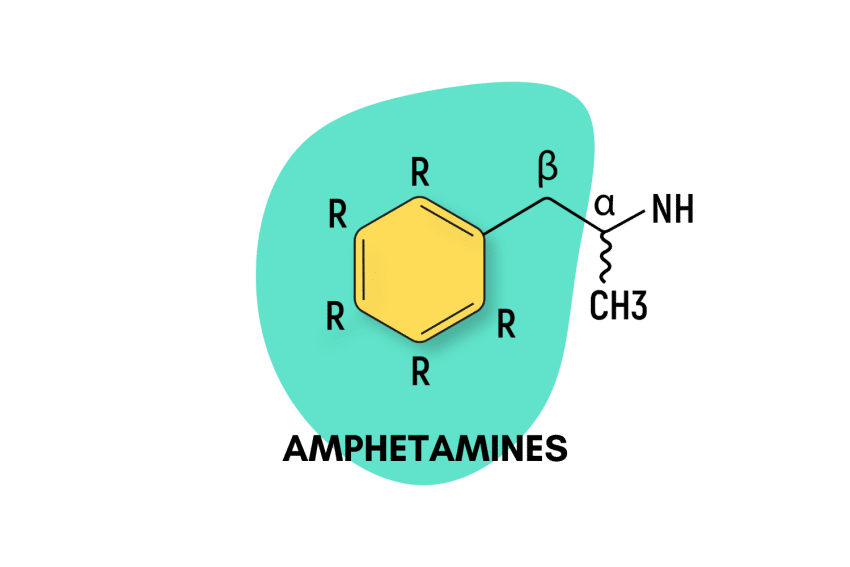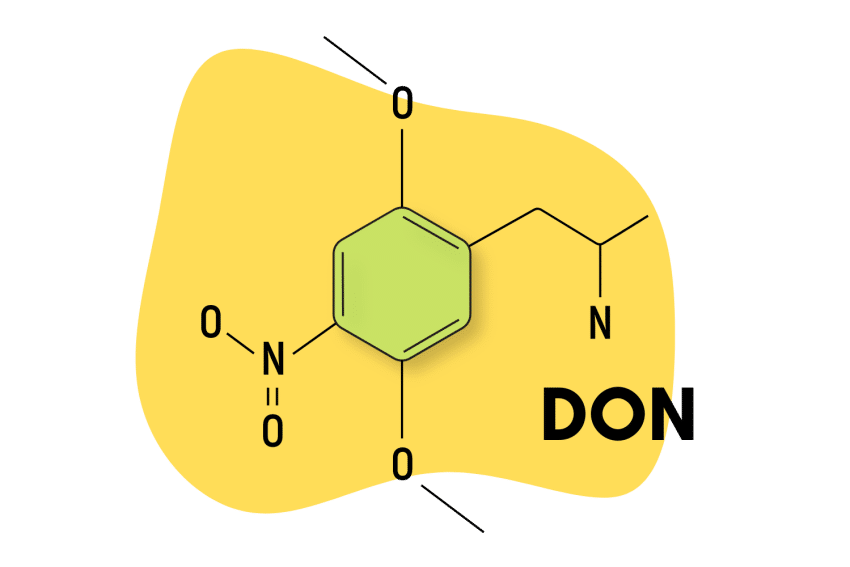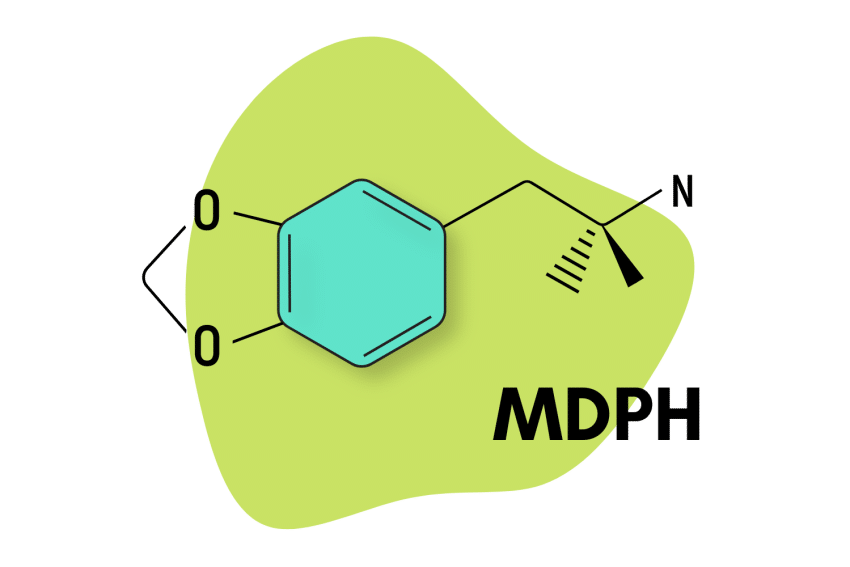4-FA: A New Frontier in Stimulant Drugs
4-FA is a popular designer drug with an effect profile similar to MDMA.
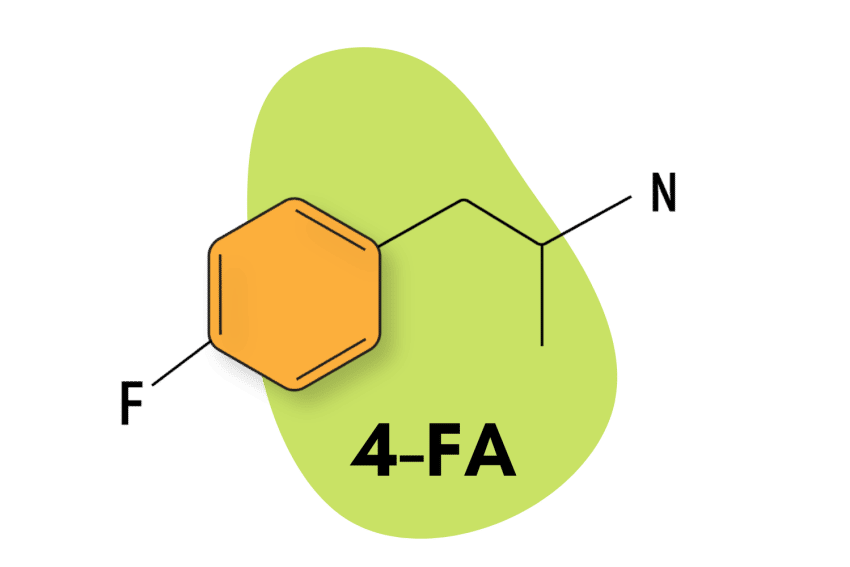
4-FA has been on the designer drug market since at least 2007 but has only gained significant traction in the designer drug space within the past five years or so.
This compound is classified as a fluorinated amphetamine with both empathogenic and stimulant qualities.
As a recreational drug, 4-FA is the most popular compound in its class. It’s similar to MDMA in terms of the effects but not quite as strong or as markedly empathogenic.
4-FA has average to slightly less-than-average potency than other members and, according to user reports, displays fewer side effects than MDMA.
4-FA Specs & Technical Details
| Chemical Name | 4-Fluoroamphetamine |
| Level of Risk | Moderate |
| Street Names | 4-FA, 4-FMP, PAL-303, Flux, Para-fluoroamphetamine, PFA, 4-Flava |
| Most Common Side Effects | Bruxism, suppressed appetite, insomnia, blood pressure elevation, increased heart rate |
| Duration of Effects | Five to eight hours |
| Legality | Not a controlled substance in the United States |
| Status | Research Chemical |
| Estimated Threshold Dose | 40 mg |
| Common Dose | 75 to 125 mg |
| PubChem ID | 9986 |
| CAS# | 459-02-9 |
| IUPAC Name | 1-(4-fluorophenyl)propan-2-amine |
What Are the Effects of 4-FA?
4-FA displays a unique characteristic — it has two distinct phases, each with different effects.
The first three to four hours of 4-FA present distinct entactogenic effects similar to MDMA, although not quite as powerful. This is thought to correlate with the release of serotonin (in addition to dopamine and norepinephrine).
During the second phase, about 4 or 5 hours later, the effect shifts towards something like classic amphetamine stimulation, which can persist for several hours.
4-FA is one of the few designer drugs whose subjective effects have been formally studied in humans. After administering single doses of 4-FA (100 mg and 150 mg) to twelve healthy volunteers, a study found the following effects [2]:
The study noted physical changes, including a significant increase in systolic blood pressure, diastolic blood pressure, and heart rate. The report also noted cognitive changes such as improved self-reported vigor, friendliness, arousal, and positive mood. These effects were strongest one hour after receiving the dose.
As has been reported with other stimulant drugs like MDMA and amphetamine, 4-FA improved performance in a number of tests; it improved tracking performance in a divided attention task and decreased reaction time in a spatial memory task.
Even with studies like this, the availability of a peer-reviewed human study is a luxury for designer drugs. In this example, only 4 of the 12 volunteers finished the study. This sample size is too small to draw any meaningful conclusions.
Physical Effects of 4-FA
- Stimulation
- Spontaneous bodily sensations (body high)
- Physical euphoria
- Tactile enhancement
- Abnormal heartbeat
- Vibrating vision
- Headaches
- Muscle contractions
- Appetite suppression
- Dry Mouth
- Increased perspiration
- Pupil dilation
- Orgasm suppression
- Temporary erectile dysfunction
- Difficulty urinating
- Teeth grinding
- Seizure (rare)
- Color enhancement
- Hallucinations
Cognitive Effects of 4-FA
- Anxiety suppression
- Disinhibition
- Empathy and sociability enhancement
- Cognitive euphoria
- Thought acceleration
- Focus enhancement
- Novelty enhancement
- Immersion enhancement
- Motivation enhancement
- Compulsive redosing
- Increased libido
- Delirium and confusion
- Ego inflation
- Time distortion
Come-Down Effects of 4-FA
4-FA is notorious for its heavy come-down effects. Some of these effects can last several days after using the drug.
Patients in studies involving 4-FA report headaches, fatigue, difficulty concentrating, and anhedonia (a reduced ability to experience pleasure).
These findings are consistent with similar experiences involving MDMA and are tied to a state of functional dopamine depletion in the brain. These effects may become more prominent in 4-FA users who use the drug intensively over a prolonged period of time.
4-FA Dosage
Based on subjective self-assessments, the average (oral) dosing values for 4-FA break down as follows:
| Threshold | 30 to 40 mg |
| Light | 50 to 70 mg |
| Common | 70 to 110 mg |
| Heavy | 115 to 150 mg |
It’s important to remember that there is little scientific objectivity to these numbers and that everyone is different when it comes to dosing. If you’re a first-time user or someone who’s generally inexperienced with drug use, we suggest you try a threshold or light dose and avoid redosing.
Understanding how you might react to a given compound is crucial before venturing into higher dosing ranges.
Risks & Safety: 4-FA
All psychostimulants can be risky for the user — especially those purchased from unregulated online vendors or, worse, on the streets.
In general, psychedelic amphetamines can be relatively safe when used responsibly and in the company of people you trust. They become increasingly dangerous with compulsive use or when taking high doses, mixing with other drugs, or using drugs that haven’t been tested for purity.
Stimulants can cause cardiovascular complications due to overstimulation of the autonomic nervous system. Adverse cardiovascular events have been reported after recreational use of these products and may include stroke, myocardial infarction, and sudden death.
Similarly, sympathomimetic effects such as agitation, tachycardia, hypertension, and hyperthermia have been reported for NPS (New Psychoactive Substances) that are structurally related to stimulants.
4-FA can produce potentially life-threatening cardiovascular complications. The human study mentioned earlier proves that 4-FA can cause cardiovascular adverse events and that these can appear at doses typically used in a recreational setting.
In the Netherlands, 4-FA use has been connected to cases of fatal cardiac arrest and severe brain damage due to stroke.
Other negative characteristics, such as pervasive after-effects, have been registered for 4-FA, but these aren’t usually life-threatening.
There is good news, though. Compounds with serotonergic action, such as MDMA, can cause long-lasting serotonin depletion, but 4-FA does not appear to have this effect [2].
4-FA Side Effects
4-FA has a variety of adverse effects, most of them related to its stimulant-like properties:
- Agitation
- Anxiety
- Tachycardia
- Hypertension
- Chest pains
- Cardio and cerebrovascular complications, like sinus arrhythmia and ventricular extrasystoles
In general, the significant side effects of 4-FA are quite similar to other amphetamine compounds.
Withdrawal & Dependence
As is the case with all amphetamine analogs, 4-FA is a moderately addictive compound and has the potential to produce both psychological and physical dependence.
Amphetamine compounds provoke less physical dependence than other drugs with abuse liability, such as opioids and benzodiazepines. The precise mechanism of addiction is still up for debate, but it seems to lie more in activating the brain’s reward circuitry. This behavioral system can reinforce habits that lead to psychological rather than physiological dependence.
However, there is documentation of withdrawal symptoms as a result of amphetamine use, proving that at least some measure of physical dependence is possible.
The addiction liability of designer drugs is usually studied through rat self-administration, the gold standard for comparing abuse potential. Regrettably, no such study has been performed on 4-FA. Despite this, some evidence suggests 4-FA’s effects can lead to acute tolerance, which could reinforce compulsive redosing and cause addictive habits [2].
4-FA Drug Interactions
Mixing stimulants with other drugs carries a significantly higher risk than using the drug alone.
While not all drugs interact negatively with 4-FA, here are some of the main categories to avoid altogether.
Alcohol & Other Central Nervous System Depressants
Depressant compounds like alcohol, GHB, benzodiazepines, phenibut, and opioids produce an antagonistic interaction when mixed with stimulants — that is, they have the opposite effect.
They may cause the effects of the drug to become dulled — leading people to think they can take more. However, in most cases, only some of the effects are dulled, while others persist. This combination often leads to an overdose.
Other Psychostimulants
Mixing two or more drugs with the same effect carries a higher risk of side effects or overdose.
The most significant risks are heart attack, stroke, glutamate or serotonin toxicity, psychosis, hyperthermia, and dehydration.
Other common stimulants include pharmaceutical drugs like Adderall or Vyvanse, illicit drugs like methamphetamine, MDPV, or other amphetamines, as well as natural substances like caffeine.
MAO Inhibitors
These are a class of antidepressants that, combined with psychedelic amphetamines like 3-MMC or MDMA, can result in a potentially fatal condition known as “serotonin syndrome.”
How Does 4-FA Work?
Research has found that 4-FA produces its effects through two main mechanisms of action [1]:
- The inhibition of neurotransmitter reuptake
- Forced release of neurotransmitters from the presynaptic neurons
These are likely the two most common pathways used by psychostimulants, and both work towards the same effect: an increased level of active neurotransmitters in the brain.
Psychostimulants interact with three main neurotransmitters: dopamine and norepinephrine (associated with stimulant properties) and serotonin (associated with empathogenic and, to a lesser degree, psychedelic properties).
The binding affinities of these neurotransmitters, as well as the mechanism of action by which they’re mediated, are the two most significant factors when it comes to the pharmacological profile of any given psychostimulant.
In this sense, studies have found that although 4-FA presents considerable serotonin activity, it is primarily a dopaminergic compound. In general terms, this should translate into a drug with strong stimulant properties that exhibits empathogenic qualities.
Studies have shown that 4-FA, compared to amphetamine, is a more potent releaser of serotonin but increases extracellular dopamine to a lesser degree. Overall, however, the effects of 4-FA on the dopaminergic system are stronger than those on the serotonergic system. Administration of 4-FA to rats increased dopamine levels by 300% while serotonin levels only increased by 30%, a lesser degree than MDMA, for example [2].
Pharmacokinetics
During the twelve-hour window, mean concentrations of 4-FA peaked between one and two hours after administration. 4-FA concentrations slowly decreased over time but were higher than baseline at 12 hours after administration.
Harm Reduction: 4-FA
We cannot overstate the importance of disseminating harm-reduction principles for designer drugs. The addictive habits reinforced by designer drugs, the lack of regulatory oversight in their production, and the anemic quality of state support for drug abuse all combine to make harm reduction an essential aspect of recreational drug use in the 21st century.
It might sound reductive, but the most effective harm-reduction tactics are also the simplest.
Keep the following recommendations in mind when using any psychoactive compound for recreational reasons:
1. Be Considerate of Dose & Potency
The higher the potency, the higher the danger — this is a basic truism that all drug users must internalize.
And by potency, we don’t mean the subjective strength of the effects, since that can vary considerably from person to person, but the average dose required for acute intoxication (overdose). The smaller this amount is, the easier it is to miscalculate dosage and place oneself in harm’s way.
2. Test Your Drugs
Drugs purchased from unregulated online vendors, or worse, from unscrupulous street dealers, carry a high risk of adulteration. With certain drugs like cocaine, it’s almost impossible to receive something that has not been “cut” with another substance.
To hedge against the risk of contamination with dangerous substances like fentanyl, for example, we always recommend testing drugs with a reagent test kit.
These kits cost less than $40 and provide enough for hundreds of uses.
Certain countries have also allowed harm-reduction groups to operate testing centers at events where drug use is common, such as festivals or raves. If you go to an event and see one of these centers, we suggest you use it.
3. Don’t Mix Drugs
Combining potent drugs, whether legal or illegal, increases the potential for serious health events.
Drug combinations can have different effects on the body, and it may even feel like the right thing to do — for example: balancing out the effects of a heavy stimulant drug with a depressive compound. But, in reality, this is never a good idea.
Drug combinations of any kind always put the user at risk.
Final Thoughts On 4-FA
Users perceive 4-FA as a “lighter version” of MDMA that produces positive “euphoric” properties while limiting negative effects, such as confusion and dizziness.
Over the last decade, this effect profile has led to 4-FA establishing itself as a fairly popular recreational drug.
4-FA’s influence on mood and neurocognition is very similar to stimulants such as D-amphetamine and MDMA. Effects generally point in the direction of enhanced mood and performance. Negative effects can happen during the acute phase but are more likely during the subacute phase.
Responsible use is essential to avoid harm. Always test your drugs and use the lowest dose possible until you know how you’ll react.
References
- Röhrich, J., Becker, J., Kaufmann, T., Zörntlein, S., & Urban, R. (2012). Detection of the synthetic drug 4-fluoroamphetamine (4-FA) in serum and urine. Forensic science international, 215(1-3), 3-7.
- de Sousa Fernandes Perna, E. B., Theunissen, E. L., Dolder, P. C., Mason, N. L., Hutten, N. R., Toennes, S. W., … & Ramaekers, J. G. (2018). Safety profile and neurocognitive function following acute 4-fluoroamphetamine (4-FA) administration in humans. Frontiers in Pharmacology, 713.

